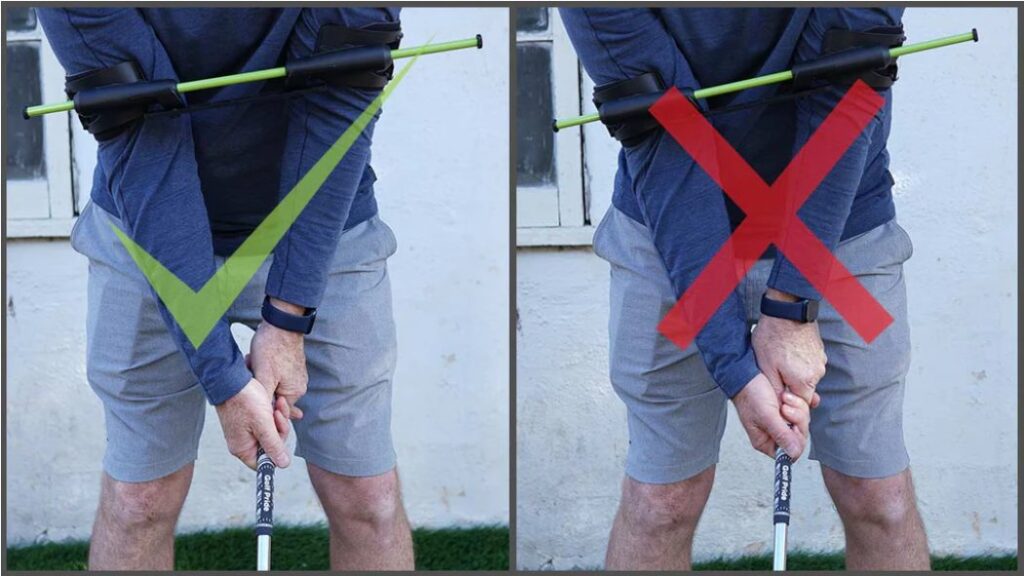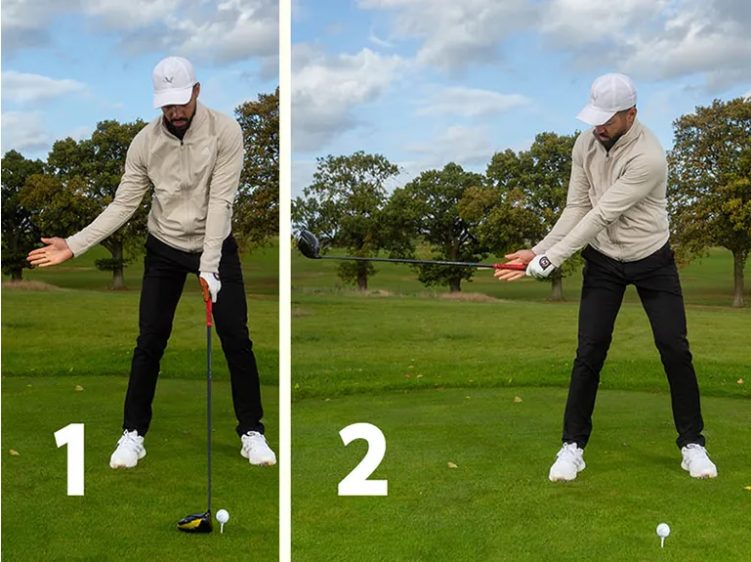When golfers keep hooking the ball, it can be very frustrating. For right-handed players, a hook happens when the ball’s path changes a lot from right to left. This makes it easy to miss greens and lose strokes. In this piece, we’ll talk about what causes hooking and how to stop hooking the golf ball. You can improve your golf swing by working on your grip, swing path, clubface position, weight distribution, body balance, speed, and timing.
When you play golf, you “hook” the ball when you hit it so that it turns strongly from right to left (or left to right) for right-handed players. Sometimes this can be annoying, especially if it keeps happening. If the clubface is closed at impact and the swing path is too far inside to out, you will hook the ball. Understanding the things that make you hook and taking steps to fix them can make a big difference in your game.
Understanding the Causes of Hooking
Incorrect Grip
A bad grip changes the ball’s path of flight in a big way. Whether the ball bends or goes straight can depend on where your hands are. A grip that is too strong or too weak can cause the clubface to close, which sends the ball to the left. To avoid hooking, hold the ball with your hands facing each other and the “V” shape between your thumb and middle finger pointing toward your right shoulder (left shoulder for left-handed players).

Swing Path Issues
A big part of what determines the ball’s movement is the swing path, or the way the clubhead moves during the downswing. Hooking the ball is often linked to a swing path that goes from inside to outside. This path of the swing closes the clubface and adds too much side-spin, which makes the ball hook. Pay attention to hitting more along the target line and making sure the clubhead is in line with the target at impact to fix the swing path.
Clubface Position

The position of the clubface at impact is crucial in determining the ball’s direction. A closed clubface exacerbates hooking tendencies by imparting a left-to-right spin on the ball. To avoid hooking, it is essential to square the clubface at impact. Try rotating your forearms to promote a more open clubface position, allowing for a straighter ball flight.
Weight Distribution and Balance
Swing flaws that cause the ball to hook can be caused by uneven weight distribution and poor balance. Shifting your weight in the right way during the swing helps you keep your balance and control, which makes hooking less likely. Do drills that help you move your weight smoothly from your back foot to your front foot. This will help you get to a healthy finish position.
Body Alignment
The way your body is aligned has a big effect on where the ball goes. A tight stance can happen because of bad alignment, which changes the swing and makes a hook more likely. Make sure your feet, hips, and shoulders are all lined up with the goal line. This will help the clubface be square and the ball fly straighter.
Tempo and Timing
Tempo problems and moves that aren’t timed right can make it easier to hook the ball. If you hurry through the swing or slow down, it can change the clubface angle and make impact less consistent. Set a steady and smooth pace and make sure the rhythm and timing are matched to make the ball’s flight more predictable.
Correcting Hooking Issues
Proper Set-Up and Address
A good set-up and address position are very important for keeping hooking from happening. Make sure your feet are shoulder-width apart, your weight is spread out evenly, and your back is slightly turned away from the goal. At address, keep your grip loose and your clubface straight. All of these things work together to build a strong base for a good swing.
Practicing with Alignment Aids
Using alignment tools during practice will help you create a steady swing that doesn’t hook. To get your feet, hips, and shoulders in the right place, you can use alignment sticks or marks. As visual cues, these tools will help you keep your stance square and swing along the goal line correctly.
Swing Plane and Path Drills
Improving the swing line and direction is very important if you want to stop hooking. Some swing skills, like the “One-Plane” or “Two-Plane” drills, can help you get a more balanced swing. The goal of these drills is on swinging along the right path and direction, which makes hooking the ball less likely.
Clubface Awareness Exercises
Being more aware of the clubface helps you handle it better during the swing. As part of your training, hit balls with a certain clubface angle, like slightly opening the clubface at target. Pay close attention to where the clubface is when you hit the ball as you practice. This will help you get the ball to fly better.
Mental Approach and Visualization
Your chances of stopping the hook will go up if you think positively and use mental methods. Instead of focused on the tendency to hook, picture the ball flying straight and making a good shot. Mental techniques like mantras and pre-shot practices can help you stay confident and keep your mind on making a good swing.
Developing a Consistent Hook-Free Golf Game
Incorporating the Right Drills and Practice Routine
Setting up an organized exercise routine is important if you want to improve your golf game and stop hooking the ball. During your practice lessons, do the drills and routines listed above, paying special attention to the areas that need the most work. Regular practice with the right drills improves muscle memory and frees you from the urge to hook.
Seeking Professional Instruction
Sometimes, getting help from a golf teacher is the best way to fix hooking problems. A skilled teacher can look at your swing, figure out what problems are causing you to hook, and then give you specific instructions and drills to fix those problems. Because they are experts and give individualized lessons, they can help you stop hooking faster.
Playing with Confidence
Being confident is a very important part of being a good player. Focus on building your trust in your ability to make a good swing while you work on fixing your hooking habits. Believe in the changes you’ve made and think positively before each shot. Being sure of yourself while playing golf not only cuts down on hitting, but it also makes you better overall.
Conclusion
Although hooking the golf ball can be annoying, it is something that can be fixed with practice and the right methods. You can get a solid and hook-free golf swing by working on your grip, swing path, clubface position, body balance, tempo, and timing. Do the skills that are suggested, get professional help if you need it, and play with confidence to get the ball to fly straighter and do better on the course.
FAQs About How To Stop Hooking The Golf Ball
1. How long does it take to correct hooking tendencies?
For each player, the time it takes to fix hitting habits is different. You can see progress in just a few weeks or months if you practice regularly and work hard.
2. Can hooking be caused by equipment issues?
Hooking can be caused by problems with the tools, but the swing physics must be fixed first. Talking to a golf professional can help you figure out if you need to make any changes to your tools.
3. Are there specific exercises to strengthen the muscles involved in the golf swing?
Yes, there are exercises like spinning exercises, core building drills, and flexibility drills that work on the muscles used in the golf swing. Adding these activities to your workout schedule can help you improve the way you swing as a whole.
4. Can hooking be completely eliminated from my game?
Even though it might be hard to get rid of all hooking habits, constant practice, using the right methods, and building a strong swing can greatly reduce hooking and encourage straighter shots.
5. Can hooking be caused by mental factors?
Yes, things in your mind like stress, not being able to concentrate, or bad thoughts can change the way you swing and make you more likely to hook. Keeping a good attitude and using mental techniques can help with these problems.
